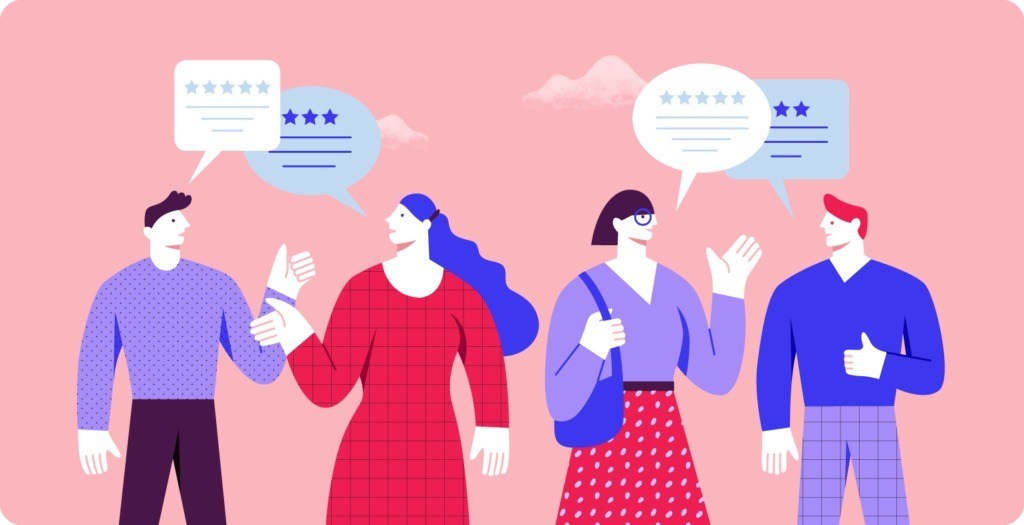What if we tell you that customers bank upon referrals almost 10 times the paid media? That’s not it! Statistics have it that 74% of consumers are more likely to take action if they have a recommendation.
Referrals work like magic and you do not want to miss the opportunity of exploiting them to your immense potential. From online reviews to word-of-mouth referrals, every recommendation helps in establishing consumer connections.
How important are referrals?
Before we start, let’s find out how valuable referrals are to your business. Referrals hold different values for every business, depending on the industry and nature of the business. Roughly put, it is the total lifetime value (LTV) of a customer and the cost of customer acquisition, which can be further used to gain more customers. Though, they don't cost much to acquire, if anything.
On top of that, referrals increased by tremendous numbers amidst the covid outbreak since companies struggled to increase their customer base and everything, from purchasing to reviews and referrals moved to the web!
How do referrals or word-of-mouth marketing work?
Did you ask your friends for recommendations of a cafe or restaurant to have a soothing conversation over a coffee or a dentist they have been going to? If the answer is yes, you already know the concept of word-of-mouth marketing or referrals.
It is effective since it helps enterprises to establish local proof, get on a fast track to gain and retain customers’ trust and loyalty and remain at the top of their minds.
It can not be denied that people get highly influenced by the experiences of other people. For instance, if a potential customer sees greatonline reviewsregarding your business, they will naturally think that if other people had a good experience with your business, they will too!
It works by the mantra that the more people talk about your business, the more potential customers you will earn.
What is a customer referral program?
We have been talking about referrals and referral programs. But what exactly is a referral program? Referral marketing ‘in action is termed a customer referral program. Through this customers are encouraged to refer the business and its products and/or services to their family and friends.
Have you ever read a text saying, to refer to your friend and have a discount on your next purchase? This is how customers are encouraged! It is also done through emails, Facebook, Instagram, or alike online platforms. Everything is based on reviews and recommendations. To know more about reviews and review management tools, clickhere.
What are the different types of referral marketing Programs?
There are majorly 4 types of customer referral programs namely, Direct, Implied, Tangible, and community referral programs. Let us now dive into the explanations.
- Direct Referral Program: When you request a referral to your customer and offer a reward for every referral they provide. For example, you ask your customers to refer their services to others and provide reward points for each referral they can redeem at the time of their next purchase.
- Implied Referral Program:In this type of referral, you start a wave in the market and let your target market audience or customers know that you are doing work for customers with similar needs as theirs. For instance, you have an academic institution! You can distribute your pamphlets in areas that are student hubs. However, they are difficult to track since they’re less direct but can prove to be very effective!
- Tangible Referral Program:Under this program, businesses offer free products or services. Salons providing free spas with haircuts are an example of a tangible referral program.
- Community Referral Program:Have you ever been to a charity event sponsored by a business? This is an instance of a community referral program where a business enters into collaboration with a non-profit organization to spread its positive image.
What are the kinds of Reward systems?
There are mainly two types of reward systems for direct referral programs, One-sided, and two-sided rewards.
- One-sided Reward:Under this system, a reward is awarded only to your customer who is referring your business to someone else.
- Two-sided Reward:When your customer refers your business to somebody, both your customer and the referred person receive a reward for engaging in the referral program. These are obviously more effective than the one-sided reward program.
Now, you must be curious about the benefits of the Referral Program.Here are the 5 Reasons why you should indulge in a Referral program.
1. More Trust among Customers:As per theBirghtlocal survey in 2020, 79% of consumers confirmed their reliance on online reviews and recommendations from friends and family. It makes the monitoring of online reviews very important. In case, you are wondering how to do it, Rannkly is here to help! It is aReview management toolthat can transform your business’s online presence.
2. Attracting new customers at a low cost with high lifetime value:The cost of a referral is fixed (per referral) and the payment is also performance-based. Thus, it turns out to be much cheaper than advertising.
3. Customers with High Intent:Customers who are referred by existing customers tend to retain more than other customers. Further, they are more likely to make a purchase and have a higher customer lifetime value than the customers who are not referred.
4. Proven success of PayPal:PayPal rolled out one of the first notable referral programs and started with $20 when customers made an account and $20 for every referral they made. The company witnessed a user base of 10 million and a daily growth rate of 7-10%.
5. Dropbox’s case:Dropbox got greatly inspired by the success of PayPal’s referral program and issued its own. As a result, user signups increased by a whopping 60%. The total referrals were around 2.8 million and that too in just the first 18 months.
Even after a great track record of proven success, companies are not taking advantage of referral program systems.
Now that you can comprehend how referrals and referral programs work, let us now understand in detail how to build a strong customer referral program that delivers the most ROI.
1. Set up your goals for the referral program
The first thing to determine is the goal of the referral program. Whether you are dedicated to growth or you end up with higher revenues. One most important aspects is to figure out if your business is from an industry that demands an extraordinary amount of trust-building. Once you figure it out, set it concrete so that you can further compare and monitor your intended results.
2. Determine rewards and incentives for your referral program
The nature of the reward should be in line with the nature of your business. Rewards can not be the same for every business. One deciding factor is to find out something that is valued by your existing and prospective customers. The rewards and incentives should motivate your existing customers to make referrals to others.
For instance, a cafe can offer free coffee with the next order or an apparel store can offer discounts on the next purchase. Below are the most common referral program rewards:
- Credits or Store Credits
- Free upgrades
- Discounts
- Coupons
- Giveaways
- Free products or services
- External gift cards e.g., Amazon gift cards
3. Design your CTAs and landing page
As they say, ‘first impression is the last impression. Hence it is very crucial to design a landing page that engages the visitors and stops them from bouncing from the site. One thing to note here is that it must impart the information in a precise and clear manner (E.g., get $10, gift cards). It should speak about the brand.
Also, keep the process easy and in limited steps. No one would stick to the page if the process of the reward is difficult to navigate through.
4. Crafting texts and links
Design captivating texts that your customers, both existing and potential customers will receive along with the referral code or link. Try to make templates that are easy to fill and share with others.
5. Choose the tools to manage your referral program
As stated before, online reviews and personal referrals play a very important role in your referral program. Try to manage your reviews and monitor them using afree online review monitoring toolor paid ones, in case the free tools are not suitable.
Rannkly, a reputation management tool can help you with your needs!
Further, use tools to track your referral links and carve out key success metrics. Use a CRM or Customer relationship management tool to follow up with your prospects.
6. Promote your customer referral program
Once you have completed all the above steps, the next is to tell the world! After launching the referral program, promote it on every platform that your prospects are most likely to visit. This may include your website, social media handles, emails, and manually through phone and customer service. Please make sure that the message of the promotion is consistent across all channels.
7. Monitor the effectiveness of the program
Once your program is in place and running, keep monitoring it against pre-defined yardsticks, for example, impressions, sales, etc. Check if the rewards are working with the customers and prospects or if they should be changed to make the program run better.
Take it from Google Workspace, Dropbox, or PayPal, referral programs can transform your business. Now since you know, go and start designing your referral program!




/filters:format(webp)/assets/images/schedule-demo-2.jpg)